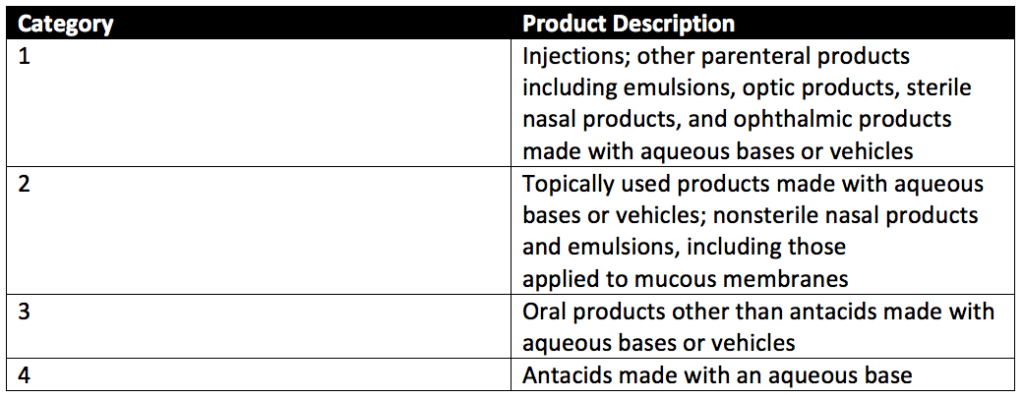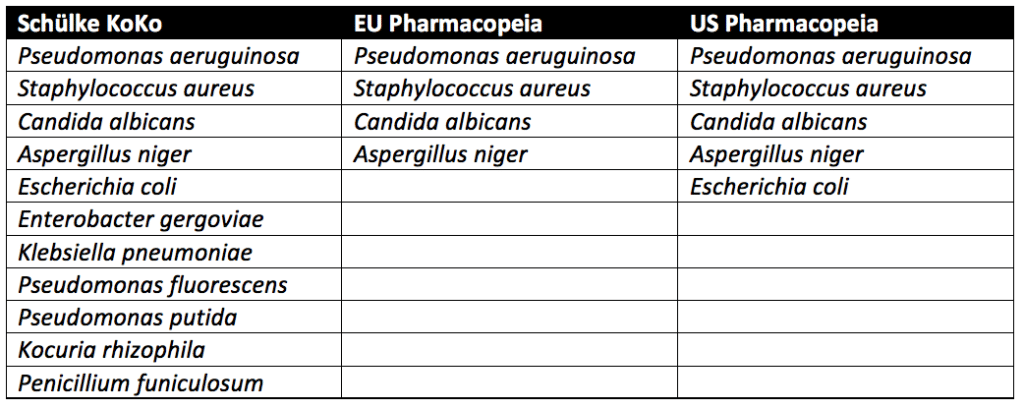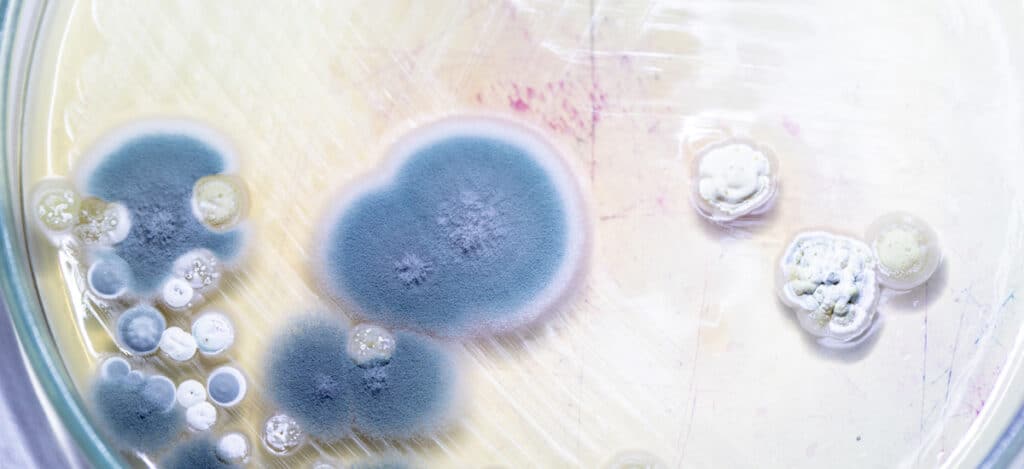Preservative Challenge Testing vs. Microbial Immersion Challenge Testing
What is preservative challenge testing (preservative efficacy testing)?
Preservative challenge testing, also known as preservative efficacy testing (PET), determines the effectiveness of a preservative during its shelf life and evaluates how well a product withstands microbial contamination during use. Preservatives are substances mixed into creams, gels, and other liquids. Preservatives are used to prevent the growth of bacteria, fungi, and other microorganisms within a medical, cosmetic, household, or food product. Preservatives also help keep the freshness of the appearance of a product and keep its consistency intact over time. This article covers microbial challenge tests for USP guidelines, liquid immersion microbial challenge testing (microbial immersion challenge tests), and preservative challenge tests for USP 51.
What is microbial immersion challenge testing?
In a microbial challenge, a product, agent, or process is exposed to (challenged by) microbes.
USP microbial immersion challenge testing evaluates a finished product’s package integrity by exposing the sterile packaged product to liquid bacteria. After the package has been exposed to bacteria, the contents are assessed for bacterial contamination. Only the visual presence of the bacterium can be evaluated with microbial immersion testing.
What products require preservative challenge testing?
Preservative challenge testing can be used to determine the best preservative to use in your topical formulation and the minimum effective concentration needed to preserve the pharmaceutical, food, or biotechnology product being assessed. Topical formulations (gels, creams, ointments, and lotions) comprise a water or oil base that delivers various medications, natural substances (such as herbs), or moisture through the skin. Topical cosmetics contain preservatives to support the stability of the formulation and prevent microbial growth during repeated product use. Preservative challenge testing is also used for parenteral products containing multiple doses. In these products, antimicrobial preservatives inhibit the growth of any microorganisms introduced during repeated insertion and withdrawal to load individual amounts.
Preservative efficacy testing can evaluate four categories of products with preservative challenge testing. These product categories are detailed in Table 1 of USP 51, reproduced below.

What products require microbial immersion challenge testing?
USP microbial challenge tests by immersion are used when a validated physicochemical leak test method does not exist or when there is a need for direct evidence of the prevention of microbial entry into a packaging system. Thus, the packaging used for the product determines whether a microbial immersion challenge is an appropriate or unnecessary regulatory assessment. USP microbial immersion challenge testing is a qualitative measure that confirms leaks in nonporous rigid or nonporous flexible packages. For this test to be effective, the packages must tolerate liquid submersion. Liquid immersion microbial challenge testing is often used during product–package development and validation studies.
How is preservative challenge testing performed?
Three approaches are used in preservative challenge testing. These approaches come from the Schülke KoKo Test, United States Pharmacopeia (USP), and the European Pharmacopeia.
Schülke KoKo Test vs. U.S. Pharmacopeia vs. European Pharmacopeia
Pseudomonas aeruginosa, Staphylococcus aureus, Aspergillus niger, and Candida albicans must be tested for in all cosmetic products sold in the European Union. In addition to the microbes above, testing with microbes known to lead to spoilage of cosmetic products is recommended but not required. In the United States, the USP guidelines require testing of Escherichia coli in addition to Pseudomonas aeruginosa, Staphylococcus aureus, Aspergillus niger, and Candida albicans. Spoilage microbes are not needed for PET. In contrast to the pharmacopeia tests, which only evaluate pathogenic microbes, the Schülke KoKo test evaluates product spoiling microorganisms. Schülke KoKo test’s spoiling microorganisms are based on decades of cosmetic testing experience from Schülke & Mayr in Germany.
USP preservative efficacy testing evaluates cosmetic products by exposing them to a single microbial strain at a time. Additional details on USP preservative challenge testing, which follows similar procedures to the European Pharmacopeia, can be found through reading our articles on Preservative Challenge Testing And USP 51 and Preservative Efficacy Testing For Medical Devices. In contrast, for the Schülke KoKo test, the single cultivated microbes are brought together into a mixed suspension to challenge the cosmetic product. A new mixed suspension is prepared for each of the six inoculation cycles for Schülke KoKo testing. Since the Schülke KoKo test uses a mixed microbe inoculation, it simulates microbial exposure of a product during production, filling, and use. Indeed, a product would likely be exposed to multiple microbes at once instead of one at a time. Overall, though different from the USP and European Pharmacopeia methods, the Schülke KoKo Test is a reliable test method for assessing the efficacy of antimicrobial preservation of cosmetic products.

First, cultures of Candida albicans (ATCC No. 10231), Aspergillus brasiliensis (ATCC No. 16404), Escherichia coli (ATCC No. 8739), Pseudomonas aeruginosa (ATCC No. 9027), and Staphylococcus aureus (ATCC No. 6538) are prepared. Stock cultures of these organisms are prepared by centrifuging an ATCC culture removing residual media from the prior culture, and resuspending the microorganisms in a sterile suspension fluid. The suspension fluids for each microorganism referenced above are prepared at a microbial count of about 1 × 108 colony-forming units per milliliter (CFU/mL).
Preservative efficacy testing is performed in five sterile, capped containers. Suppose the product’s original container is sterile, can be entered aseptically, and holds an appropriate product volume. In that case, the original filled product containers may be used. Each of the five product samples is injected with a test suspension of either Candida albicans, Aspergillus brasiliensis, Escherichia coli, Pseudomonas aeruginosa, or Staphylococcus aureus. Note that each product sample is exposed to only a single microbe of the five listed, and all microbes are exposed to the product during testing. The microbial test suspension injected is between 0.5%- 1% of the volume of the product under assessment and is at a concentration of 1 × 105 and 1 × 106 CFU/ml of the product for category 1-3 products. The final concentration per ml of product for category 4 products is between 1 × 103 and 1 × 104 CFU/mL.
Each of the five product samples with their respective microbial injections is incubated at a simulated room temperature of 22.5 ± 2.5°C or 32.5 ± 2.5°C depending upon the microbe the product sample is exposed. Microbial counts are taken at 7, 14, and 28 days for most microorganisms tested. The plate-count method is used to determine the number of CFU present in each of the inoculated product samples. This plate-count method is completed in duplicate. Once all counts are taken, the change in log10 of the concentration of CFU/ml is calculated for each microorganism. The requirements for antimicrobial effectiveness are met if no increase in microbial growth for the various organisms tested occurs within the timeframes specific to each organism. are met. No increase in microbial growth is defined as not more than 0.5 log10 units more than the previous microbial growth value.

How are microbial immersion challenge tests performed?
Liquid microbial immersion challenge testing is performed by filling test samples with sterile, growth-supporting media, followed by incubation and visual sample inspection to ensure media sterility before the microbial challenge. Soybean-casein digest medium is commonly used for microbial immersion challenge testing. Samples are then immersed in a concentrated bacterial suspension at temperatures that support microbial growth. Brevundimonas diminuta and Serratia marcescens are the most used microorganisms for immersion challenge testing and are used at a minimum concentration of 105 colony-forming units per milliliter. After immersion within the bacterial suspension, samples are exposed to pressure cycles under a vacuum. Differential pressure helps eliminate trapped air and ensures that liquid media within the packages make it to any leak sites. Additionally, differential pressure simulates the pressure changes during air transport of the product. In some cases, differential pressure can simulate conditions experienced by the product during sterilization treatments.
After immersion, samples are incubated under growth-promoting conditions. Package contents are then examined for evidence of microbial growth by visual inspection. A positive visual inspection will find bacterial growth inside the tested packages. Liquid microbial immersion challenge testing takes about 1-2 weeks for completion due to the time needed for pre-incubation, sample immersion, incubation following sample immersion, and microbial inspection.
What are the differences between preservative challenge testing and microbial immersion challenge testing?
Preservative challenge testing determines the best preservative to use and the minimum effective concentration needed to preserve multidose parenteral products, topicals products, food, or other healthcare items that contain preservatives. In contrast, microbial immersion challenge testing is a package leak test for nonporous packaging and uses the application of differential pressure under a vacuum. This differential pressure under vacuum allows sterile test media within the package to move to the edges of the packaging, creating a fluid path for microbes at any leak sites. The differential pressure also simulates pressure differentials if packages are shipped as air freight. Microbial immersion challenge testing is qualitative, whereas preservative challenge testing is quantitative. Overall, microbial immersion challenge testing is a package leak test, and preservative challenge testing is an evaluation of the antimicrobial properties of a product.
Summary
Overall, both preservative challenge and microbial immersion challenge testing are imperative for regulatory approval of pharmaceuticals, cosmetics, and medical devices. These tests ensure that parenteral products, topicals, and medical devices have sufficient antimicrobial activity and packaging integrity to keep patients safe during product use. Preservative efficacy testing evaluates injectables, topicals, orals, and antacids made with an aqueous base for their antimicrobial activity. In contrast, microbial immersion challenge testing is critical for product packaging when direct evidence that the packaging prevents contamination is needed. All in all, ensure you choose a contract manufacturing organization that can support you with appropriate microbial challenge testing and preservative challenge testing for your unique cosmetic, pharmaceutical, or medical device product needs.
MycoScience is a contract manufacturing organization specializing in Preservative Efficacy Testing and Microbial Aerosol Challenge Testing. MycoScience also offers Sterilization Validations, Bioburden Testing, Cleaning Validations, Accelerated Aging, Microbiology Testing, Cytotoxicity Testing, Bacterial Endotoxin Testing, EO Residual Testing, Package Integrity Testing & Environmental Monitoring services medical devices and allied industries. MycoScience is an ISO 13485 certified facility.
References
Michael J. Akers. Sterile Drug Products Formulation, Packaging, Manufacture, and Quality. Drugs and the Pharmaceutical Sciences. Informa Healthcare. 2010.
United States Pharmacopeial Convention. <51> Antimicrobial Effectiveness Testing. Rockville, MD, USA. 2021. (USPC <51>).
United States Pharmacopeial Convention. <1207.2> Package Integrity Leak Test Technologies. Rockville, MD, USA. 2021. (USPC <1207.2>).
Sharing this in your social netwroks

